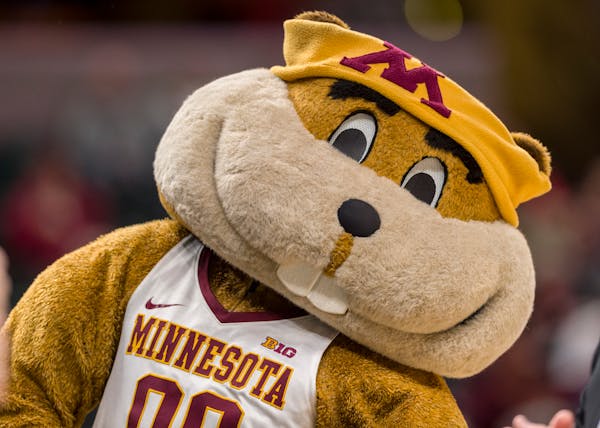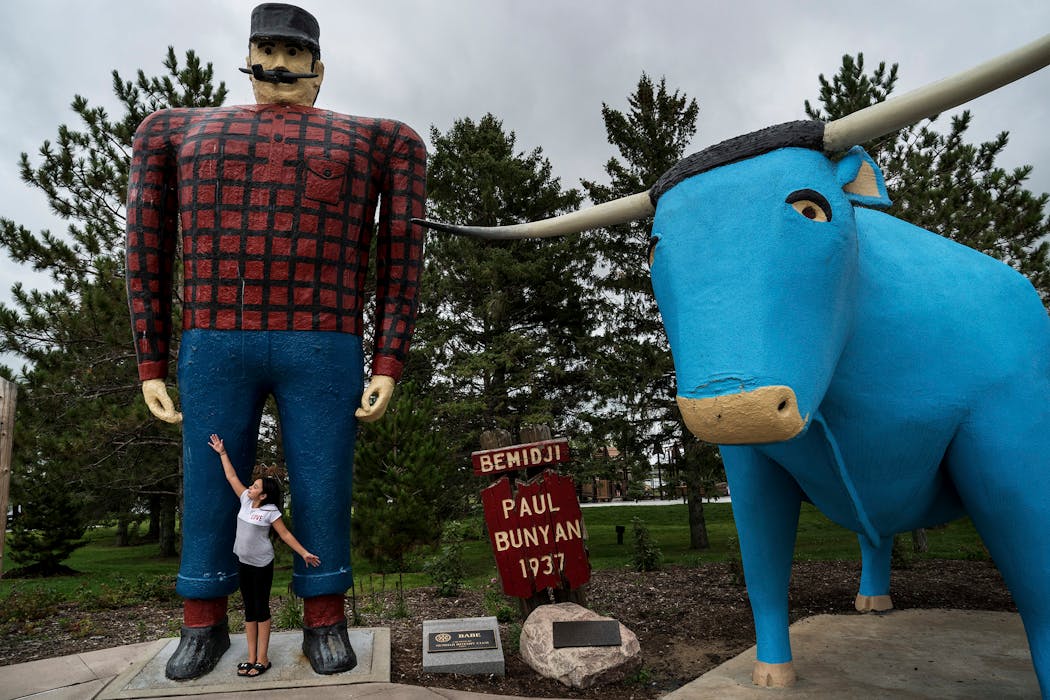Does Minnesota or some other state have the best claim to Paul Bunyan?
Listen and subscribe to our podcast: Via Apple Podcasts | Spotify | Stitcher
When Ross Stadheim was a kid, his family visited Paul Bunyan Land, a 66-year-old amusement park in Brainerd. As they walked in, Stadheim was amazed when a giant statue of Paul Bunyan greeted him and his brother by name.
"It said, 'Hi Ross! Hi Alex! How are you today?' and that blew my mind," he said. (Later, he learned that employees gather children's names at the entrance, so "Paul" can welcome them personally.)
The memory inspired Stadheim to seek information from Curious Minnesota, our community-driven reporting project fueled by questions from readers. "Lots of states claim Paul Bunyan as their own — like Maine, Michigan and California. Does Minnesota have the best claim?" he asked.
The answer is, sort of. The most famous figure in American folklore began with tall tales in 19th century logging camps. He received his first widespread public attention in Minnesota. But as his popularity grew, states around the country fought over rights to claim him as their own.
Americans know Paul Bunyan as a supersized logger who created Minnesota's lakes when his bootprints filled with water and dug Lake Superior as a watering trough for his giant blue ox — but also carved the Grand Canyon with his ax.
But in the original lumberjack tales, he was "only" about 7 feet tall, said Michael Edmonds, author of "Out of the Northwoods: The Many Lives of Paul Bunyan."
Old-timers liked to try to outdo each other with outrageous and often humorous stories about an extraordinarily powerful logger who helped co-workers out of scrapes. Logging was a seasonal occupation, so work crews regularly split up and moved from place to place, spreading the legends as they went.
The earliest reliable account Edmonds found of a logging-camp tale was from the winter of 1885-86 in — brace yourself, Minnesotans — Wisconsin. But Minnesota figures prominently in Bunyan's journey after that.
The first public record of the Bunyan tales appeared in a brief article in a Duluth paper in 1904. Ten years later, a former logger-turned-advertising manager for the Red River Lumber Co. wrote a brochure about Bunyan, further spreading his fame. The company, which moved from northern Minnesota to northern California around that time, took the woodcutting giant as its logo, emblazoning their products with his image, Edmonds said.
When the United States emerged from World War I as an international power, "the country needed a hero, and they identified Bunyan with America's use of strength," Edmonds said. After the war, best-selling books portrayed Bunyan as a superhuman giant.
During the Depression, resorts and promoters used his name to attract tourists. Finally, starting in the 1950s, Bunyan tales shifted primarily to children's books. Bunyan grew to represent America's vision of itself. So which state can claim him as its own? "I don't think there's any state that can't," Edmonds said.
---
If you'd like to submit a Curious Minnesota question, fill out the form below:
Read more Curious Minnesota stories:
How did Minnesota become one of the most racially inequitable states?
Why is Minnesota more liberal than its neighboring states?
When you flush a toilet in the Twin Cities, where does everything go?
Was Minnesota home to nuclear missiles during the Cold War?
Why do we have water towers and what do they do?
Should Minnesota be considered part of the Midwest?
Why is it so much harder for U students to graduate debt free compared with the 1960s?




